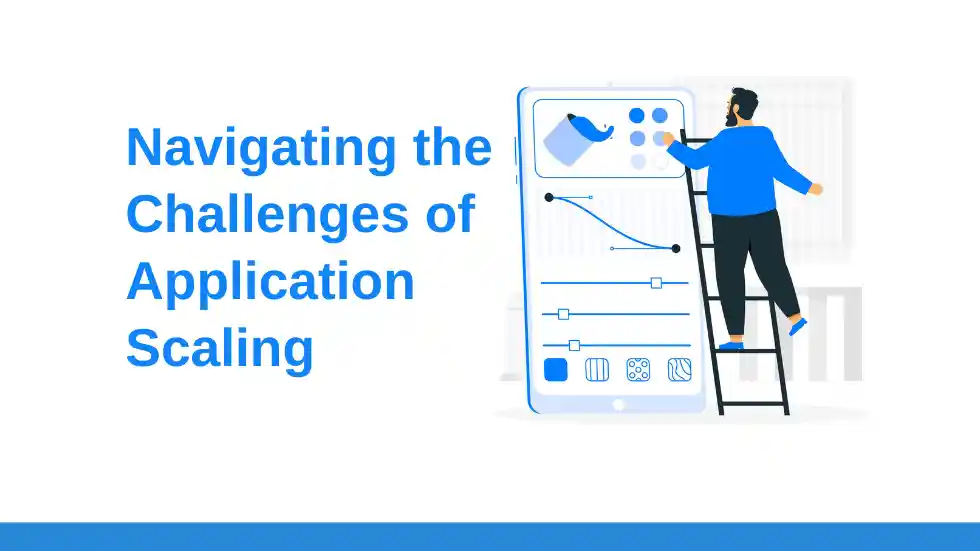Scaling your application to accommodate a growing user base is essential for sustained growth and success. However, it comes with a unique set of obstacles – the challenges of application scaling. From performance hiccups to data management hurdles, these challenges can hinder user experience and ultimately stall progress if not addressed strategically.
Untangling the Common Roadblocks in Application Scaling:
Let’s delve into the common areas where applications struggle as they expand:
- Performance Bottlenecks: The Bane of a Growing App As traffic increases, slow response times, latency, and crashes can become your app’s unwelcome companions. Single points of failure, such as overloaded servers, can grind your application to a halt, frustrating users and damaging your brand reputation.
- Resource Conundrum: Where Did My Server Space Go? Expanding applications demand careful resource allocation. Under-provisioning leads to slowdowns and crashes, while over-provisioning means wasted money and inefficiency. Striking the perfect balance in your application scaling strategy is essential for optimal resource usage.
- Data Deluge: Maintaining Consistency at Scale A growing user base equals a surge in data. Traditional databases can buckle under the strain, leading to inconsistencies and inaccurate results. Ensuring data integrity and seamless scaling of data storage and management is crucial for your app’s reliability and performance.
- Maintainability Matters: Keeping Your App Agile Large, complex codebases get harder to maintain as features and services are added. The risk of breaking existing functionalities, slowing down development, and making the application rigid increases with every new line of code. A well-structured architecture is critical for maintainability in scaling applications.
Navigating the Scaling Journey: Proven Strategies
Here’s how you can tackle the challenges of application scaling head-on:
- Horizontal Scaling: The Power of Distribution Add more servers or instances to your infrastructure, spreading the workload. Think of opening more checkout lanes in a busy store – it handles more customers and prevents bottlenecks.
- Microservices Architecture: Building Modular Applications Break down your monolithic application into smaller, independent services. Scale individual services as needed rather than the entire application, optimizing resource usage and enhancing development flexibility.
- Load Balancing: Smart Traffic Management Distribute user requests across multiple servers using a load balancer. This ensures resources are optimally used and no single server gets overwhelmed, ensuring consistent performance even under heavy load.
- Caching: The Secret to Speedy Responses Store frequently accessed data in a cache (in-memory or distributed) to minimize database queries and serve content faster. This significantly improves response times and reduces server load, especially in read-heavy applications.
- Monitoring & Analytics: Your Early Warning System Implement robust monitoring tools to track performance metrics, resource usage, and error logs. These insights enable proactive identification of potential bottlenecks and data-driven scaling decisions, keeping your application healthy as it grows.
Scaling Success Stories: Real-World Lessons
- A client’s flash sale threatened to overload their system. We implemented load balancing and horizontal scaling to accommodate the surge, ensuring a seamless shopping experience even during peak traffic.
- Another client’s monolithic application faced maintainability issues. By migrating to a microservices architecture, they could scale specific features independently and achieve greater agility in updates and bug fixes.
Conclusion:
The challenges of application scaling are an inevitable part of building successful applications. Proactive planning and the intelligent use of scaling techniques are essential to ensure your application stays healthy and performant as it attracts more users and becomes more complex.
Remember, application scaling is an ongoing process. Continuous monitoring, analysis, and adaptation are key to ensuring your application thrives in the long run.
Additional Resources:
